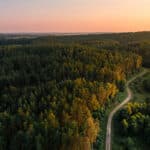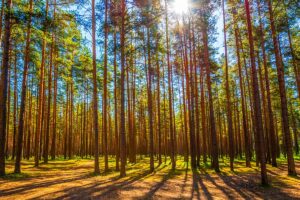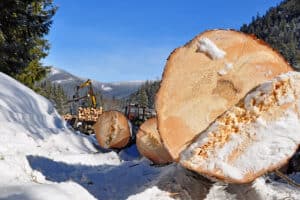(Part I of this series presented a sample cruise that will be referred to in this column.)
The seller of a timberland tract may be tempted to overstate the extent and value of his stumpage. Some foresters working for such sellers have been known to structure cruise information toward that end. Here are some common ways that a bogus cruise might be constructed.
1. Counting volume on inoperable acreage. In Mr. Johnson’s cruise, the forester has correctly deducted five acres from the total of 50 as being non-timberland area. This category might include surface water, roads and open land.
Inoperable acreage is wooded, but it has some feature that makes it uneconomic or technologically impractical for loggers to gather the timber on it. This can mean the land where otherwise merchantable timber is found is too steep for operating equipment or too swampy. Regulatory constraints — for example, a setback provision from a stream — also pull acreage out from the operational category.
The most egregious example of counting volume on inoperable acreage that I’ve seen involved a 5,000-acre tract in eastern North Carolina. A forester had prepared a cruise for a seller showing something on the order of $2.5 million in merchantable timber. The buyer paid $1.7 million and thought he was very shrewd. When he went to flip the property several years later, an honest cruise showed about $700,000 in merchantable timber on fewer than 1,000 acres. The rest was too wet for even shovel loggers (swamp loggers) to work in.
It’s reasonably common for a seller to count as merchantable timber that which is found in economically unfeasible spots on a tract, but timber buyers won’t. These trees are sawlogs, but they are too remote to cut and haul out economically or the cost of building a road to them is prohibitive. That volume should not be counted as merchantable.
2. Using the wrong scale. The Johnson cruise calculated the volume of the trees in the 25 1/10th-acre plots the forester sampled using the Doyle Scale, which is the scale that timber buyers in this area use when buying stumpage.
Other scales, such as the International ¼ and Scribner, calculate volume differently. The difference between Doyle and the International shows up primarily in the smaller sawlog diameters. I have seen a seller’s forester use the International Scale to estimate timber volume when local buyers always use Doyle on a hardwood tract. The result was that his International volumes were about 25 percent above the Doyle calculation. The tract was 12,000 acres, and the 25 percent inflation in volume was not insignificant.
Since local timber buyers use Doyle in Peaceful County, an innocent timberland buyer would be faked into thinking he was buying 25 percent more stumpage than he would end up with when he went to sell his timber to buyers using Doyle if the Johnson cruise were done with the International Scale.
A timberland buyer must make sure that the scale used by the seller’s forester as well as his own is the scale that local timber buyers use.
3. Counting small-diameter trees as sawtimber. Stumpage prices are determined in most cases by local buyers and markets. Each local market will determine the diameter threshold where stumpage sawtimber shifts from one product class to the next higher and much more valuable class. The shift from pulpwood value to sawlog value can involve a ten-fold increase, or more, in value, as the difference between pulpwood and sawlog prices in the Johnson cruise shows.
In the Johnson cruise, the local in-growth threshold is 12” DBH. Smaller trees are not considered sawtimber, and are, consequently, valued much lower than the same species at or above 12” DBH.
Had this forester divided premerchantable from merchantable at 8” DBH rather than 12, perhaps 15,000 to 20,000 of permerch volume would have been falsely valued at sawlog prices, not premerch prices. The difference would amount to thousands of dollars that a timber seller would never see from a timber buyer.
This content may not be used or reproduced in any manner whatsoever, in part or in whole, without written permission of LANDTHINK. Use of this content without permission is a violation of federal copyright law. The articles, posts, comments, opinions and information provided by LANDTHINK are for informational and research purposes only and DOES NOT substitute or coincide with the advice of an attorney, accountant, real estate broker or any other licensed real estate professional. LANDTHINK strongly advises visitors and readers to seek their own professional guidance and advice related to buying, investing in or selling real estate.









Add Comment